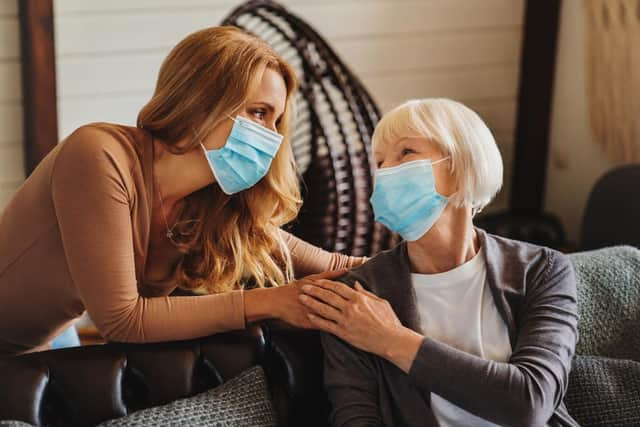Can you form a support bubble in Tier 2 and Tier 3? Current restrictions for single households in England explained
and live on Freeview channel 276
A new local lockdown system is now in force in England, with parts of the country divided into three tiers of Covid alert levels.
Regions are now divided into ‘medium’ (Tier 1), ‘high’ (Tier 2) and ‘very high’ (Tier 3) alerts based on the current local infection rates.
Advertisement
Hide AdAdvertisement
Hide AdMuch of northern England was placed into Tier 2 in an attempt to bring the virus back under control, meaning people once again face limited contact with friends and family.


But what do the rules mean for support bubbles? Here’s everything you need to know.
What is a support bubble?
A support bubble is formed when one single adult household joins with another household of any size.
These households can have close contact with each other, freely mix in their homes, have overnight stays and go to public places together.
Advertisement
Hide AdAdvertisement
Hide AdOnce you have formed a support bubble, you can think of yourself as being in a single household with the other people in your bubble. However, once this bubble is made, you should not change the people within it.
Can you form a support bubble in Tier 2?
If your local area has been placed under the ‘high’ Covid alert level (Tier 2), you can still form a support bubble with another household.
Rules state that you must not meet socially with friends or family indoors in any setting unless you live with them, or have formed a support bubble with them. This includes private homes, and any other indoor venues, such as pubs and restaurants.
Informal childcare can also continue to be provided via childcare bubbles.
Advertisement
Hide AdAdvertisement
Hide AdYou may continue to see friends and family you do not live with, or have not formed a support bubble with, outside, including in a private garden or other outdoor spaces, such as parks. However, when you do so, you must not meet in a group of more than six. This limit includes children of any age.
If you live in a high alert level area, you also cannot meet indoors with people outside of the area, unless exceptions apply.
There are some circumstances in which people from different households can gather beyond the limits set out above. These exceptions are:
- In a legally permitted support bubble
- In a legally permitted childcare bubble
- For work, volunteering to provide voluntary or charitable services for registered childcare, education or training
Advertisement
Hide AdAdvertisement
Hide Ad- For arrangements where children do not live in the same household as both their parents or guardians
- For prospective adopting parents to meet a child or children who may be placed with them
- For supervised activities provided for children, including wraparound care (before and after school childcare), youth groups and activities, and children’s playgroups
- For birth partners
- To see someone who is dying
- To provide emergency assistance, and to avoid injury or illness, or to escape a risk of harm
Advertisement
Hide AdAdvertisement
Hide Ad- To fulfil a legal obligation, such as attending court or jury service
- To provide care or assistance to someone vulnerable
- To facilitate a house move
- For a wedding or equivalent ceremony and wedding receptions where the organiser has carried out a risk assessment and taken all reasonable measures to limit the risk of transmission of the virus - up to a maximum of 15 people (not to take place in private dwellings)
- For funerals - up to a maximum of 30 people. Wakes and other commemorative events are permitted with up to 15 people present (not to take place in private dwellings)
- For elite sportspeople and their coaches if necessary for competition and training, as well as parents or guardians if they are a child
Advertisement
Hide AdAdvertisement
Hide Ad- For outdoor exercise and dance classes, organised outdoor sport, and licensed outdoor physical activity
- Indoor organised team sports for disabled people, and youth sport
- Support groups of up to 15 participants - formally organised groups to provide mutual aid, therapy or any other form of support (not to take place in private dwellings)
- Protests - if organised in compliance with Covid-secure guidance
What are the rules for Tier 3?
Advertisement
Hide AdAdvertisement
Hide AdIn areas that are on very high alert (Tier 3), meeting socially with friends and family indoors in any setting is not allowed, unless they are part of your support bubble.
This rule includes private homes and other indoor hospitality venues, such as pubs. You must also not meet with people outside of your household or support bubble in a private garden, or in most outdoor public venues.
However, you may see friends and family who you do not live with, or have formed a support bubble with, in groups of six or less in certain outdoor public spaces. These include:
- Parks, beaches, countryside, forests
- Public gardens (whether or not you pay to enter them), allotments
- Outdoor sports courts and facilities, and playgrounds
Informal childcare can also continue to be provided via childcare bubbles.
